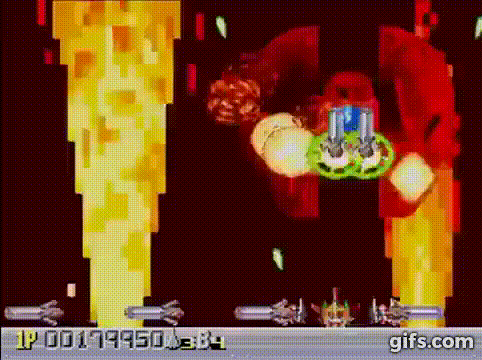Chunky mode refers to how the pixels are stored in memory. Chunky=linear=packed pixel format. That is to say, you can access a pixel as a single bit, nybble, byte, word, etc. Depends what the format is. It's fast for doing pixel based effects and manipulation. It's fast for rendering, as well as scaling and rotation (which is why the SNES mode 7 used this form of pixels, while the other modes do not).
El Viento just uses the BG layer to make the explosion pixels (they are the size of one 8x8 tilemap entry). Sort of how Sapphire does it for scaled explosions after a boss:

Turtles in Time for SNES also uses the BG layer for the scaled enemy when it's thrown at the screen.
Is there anything that can be displayed without converting from chunky to planar, like wire frame stuff or anything?
Any theoretical workarounds, like so many Genesis homebrewers have found to do impossible things on Genesis hardware?
Yeah, monochrome wireframe effects can easily be doable on the PCE planar format.
Planar system lends itself to transparency effects. It also allows more complex dynamic tile support (only update dynamic animation on specific planes); Ninja Spirit does this on the second level to allow the dynamic tiles to appear behind the leaves.
As far as the scaling thing, I do have a
much faster routine that deals directly in planar mode (for sprites). I haven't got around to using it for anything yet. I got the idea from nesdev forum - from tepples I think. It uses sprites to advance the scaling part. In other words, each 16px wide sprite gets shrink down to 1px (all ranges in between), and instead of ORing a bunch of pixel runs together, the sprites are just horizontally adjusted to remove the gaps. It's possible to do something like a 128x144 huge sprite object with scaling at 20fps @ 57% cpu resource per frame (perfect for a boss or such).